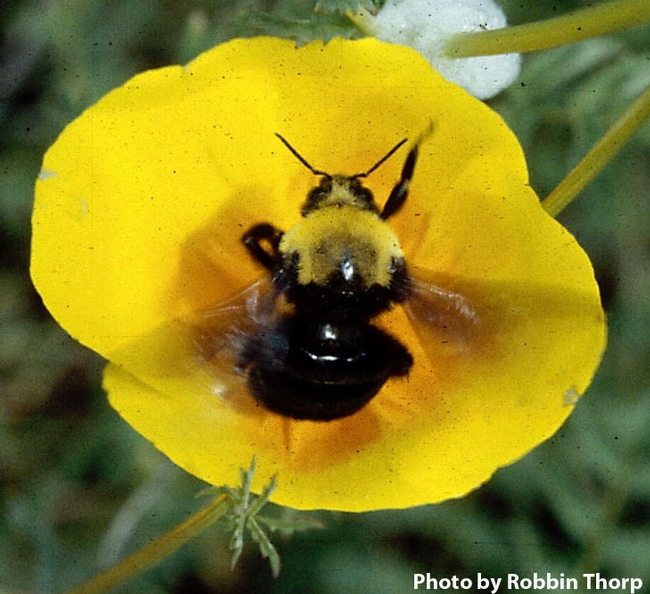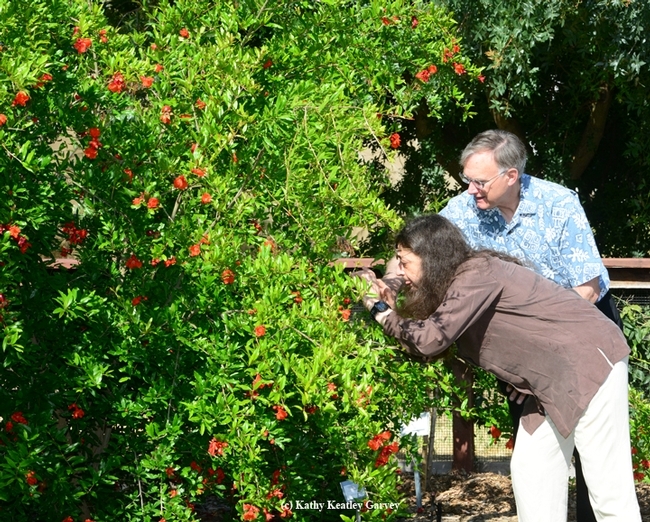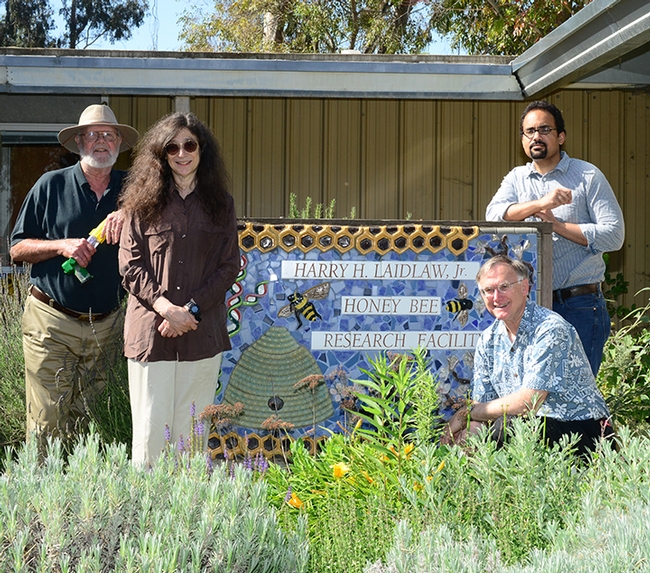
As noted entomologist May Berenbaum pointed out, it's "a celebration of Earth's 100,000-plus animal species that, by transporting pollen and facilitating flower fertilization, make life possible for two-thirds of the world's flowering plants."
Berenbaum wrote an excellent pollinator piece posted yesterday on the National Academy of Sciences' Facebook page. It bears repeating.
Berenbaum, professor and head of the Department of Entomology, University of Illinois, Urbana-Champaign, and a past president of the Entomological Society of America, related: "Not entirely coincidentally, 2017 is an anniversary for the National Academies of Sciences, Engineering, and Medicine—it's the tenth year since the publication of the Committee on the Status of Pollinators in North America report, a committee I chaired."
"My association with pollinator issues goes back to 2004, when, as Chair of the Board of Agriculture and Natural Resources, I was an outspoken advocate for a study to determine whether North America's pollinator species were declining, as appeared to be happening elsewhere in the world. The committee released its findings in October 2006, among the most striking of which was a decline in the numbers of commercial honey bees such that, were the trend to continue, the U.S. apiculture industry, on which producers of over 90 crops depend, 'would vanish by 2035.' In a remarkable confluence of events, that same month, the first reports of what was later dubbed Colony Collapse Disorder (CCD) surfaced; bees literally began vanishing, abandoning depleted, doomed colonies. Concern in the agricultural community and then the general public escalated and has remained high ever since. So, sadly, have losses; although CCD itself has declined, in the past year America lost one-third of its commercial colonies."

"The 2007 report also concluded that, unlike honey bees, population data for thousands of America's native pollinators (including its 4,000 native bee species) were sorely lacking and called for increasing efforts to engage the public in documenting, mitigating, and reversing declines," Berenbaum noted. "Since then, many data gaps have been filled and conservation strategies implemented. In 2014, President Obama prioritized a national strategy to promote pollinator health, including public-private partnerships to restore pollinator habitat."
This year the rusty-patched bumblebee "became the first continental bee to be protected under the Endangered Species Act," Berenbaum wrote.
Let's hope there will be many others.
Background on the rusty-patched bumble bee: Among those credited with sounding the alarm was Robbin Thorp, distinguished emeritus professor of entomology at UC Davis. It was a long, dedicated and challenging effort by many people who care. In 2010 Thorp co-authored a petition sent to the Xerces Society for Invertebrate Conservation. The petition was submitted to the U.S. Fish and Wildlife Service in 2013. In 2015, agency officials agreed to consider it. In 2016, they proposed protection. Then on Jan. 10, 2017, the agency listed the rusty-patched bumble bee as an endangered species.
Other key players in making this all happen included natural history photographer/filmmaker Clay Bolt and his friends at the Day's Edge Productions, which created the award-winning film, A Ghost in the Making: Searching for the Rusty Patched Bumble Bee with support from the Xerces Society and others. The result: nearly 200,000 persons signed a petition seeking endangered status for the bee.
Thorp, co-author of Bumble Bees of North America, An Identification Guide. continues to sound the alarm on the declining bumble bee population, especially Franklin's bumble bee (Bombus franklini), found only in a five-county area of northern California and southern Oregon.
He's been monitoring the elusive bee since 1998, but sadly, hasn't seen it since Aug. 9, 2006 when he spotted it in a meadow near Mt. Ashland. (See Bug Squad)
Thorp helped place Franklin's bumble bee on the Red List of Threatened Species of the International Union for Conservation of Nature and Natural Resources (IUCN). "Bombus franklini occurs only in the USA," IUCN relates. "It is found only from southern Oregon to northern California between the Coast and Sierra-Cascade Ranges, in Douglas, Jackson and Josephine and Siskiyou and Trinity counties in Oregon and California, respectively. This area is around 190 miles in the north-south direction (40º58' to 43º30'N latitude) and 70 miles from east to west (122º to 124ºW longitude)."
Franklin's bumble bee is named in 1921 for Henry J. Franklin, who monographed the bumble bees of North and South America in 1912-13. During its flight season, from mid-May through September, Franklin's bumble bee frequents California poppies, lupines, vetch, wild roses, blackberries, clover, sweet pea, horsemint and mountain penny royal. It collects pollen primarily from lupines and poppies, and gathers nectar mainly from mints.
As the end of the 10th annual National Pollination Week nears, there is so much more to be done to understand, protect and celebrate our pollinators to ensure that they don't "end."
As May Berenbaum said: "A week hardly seems long enough for the celebration!"
Attached Images:

Entomologist May Berenbaum photographs a bee on a pomegranate tree at the UC Davis bee garden, the Häagen-Dazs Honey Bee Haven, during her May 2014 visit to the campus. With her is Extension apiculturist Eric Mussen, now retired. (Photo by Kathy Keatley Garvey)

Entomologists, all! May Berenbaum presented a seminar at UC Davis in May 2014 and while on campus, toured the Harry H. Laidlaw Jr. Honey Bee Research Facility. With her (from left) are Robbin Thorp, UC Davis distinguished emeritus professor; bee scientist and assistant professor Brian Johnson (back), and Extension apiculturist (now emeritus) Eric Mussen. (Photo by Kathy Keatley Garvey)